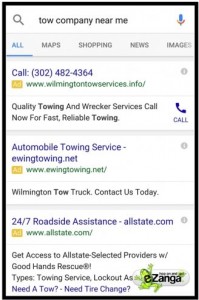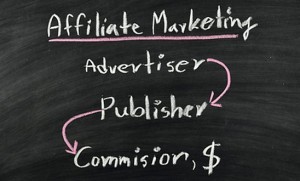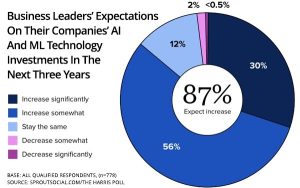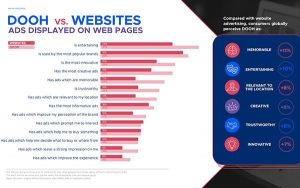— September 14, 2017
“Know your audience” is the first rule of communication. It’s also a cliche that we’ve all heard so many times that it’s hard to say what it really means.
During the first full day of Content Marketing World 2017, each session I attended, from the keynotes to topics like optimizing content for search, data-driven storytelling, and influencer marketing, hit on every marketer’s ultimate task: Figure out what your audience wants and then deliver it.
That can mean developing personas and doing market research, but there are other signals to pay attention to, and other resources to tap to connect with your customers.
So what does it really mean to know your audience? Let us count some ways.
- Listen to and answer their questions. In his keynote, Jay Acunzo told the origin story of Death Wish Coffee, which was once a struggling coffee shop brewing an unpopular kind of coffee bean. The founder, Mike Brown, could have followed conventional wisdom and started brewing the hipster coffee bean that everyone else was having success with. But instead, he listened to his customers. He often got the same question from truckers, entrepreneurs, and other work-around-the-clock professions: “What’s the strongest cup of coffee you can make?” Mike created exactly that, catering to his niche audience, who are now die-hard fans.
Andy Crestodina receives questions by email every day. Instead of shooting off a quick response, he sends insanely detailed, well-researched, well-argued, pages-long responses. While some might view that as overkill, for Andy, it’s good content marketing. Every response can become a blog post, and a question answered for one person over email can then reach thousands of others who have the same question. As Andy put it, “Never waste a good conversation by having it in private.”
- Figure out and focus on what resonates. Crestodina also talked about sifting through your existing content for the champs, the posts that elicit a gangbusters response, the ones that drive the most newsletter sign ups or other conversions. Nurture those posts. Keep them up to date. Expand them. Add more visuals. Like an athlete, posts have to keep working out to maintain their fitness level. They have to work to reach and maintain a high search ranking, and the best place to start is with the posts that clearly resonate the most with your audience.
- Understand and address audience intent. In his lunch and learn session, Kevin Bobowski of BrightEdge talked about crafting content for different moments, using the example of “gluten-free pizza.” For one segment of searchers, this is what Kevin calls an “I want to know” moment: What’s “gluten-free pizza” made of? Others might search for gluten-free pizza “near me,” in a location-based moment that suggests an intent to buy. Still others might want a recipe for gluten-free pizza so they can make one for dinner.
Each of these moments requires different content, and understanding the intent behind each search allows you to deliver each searcher exactly what they’re looking for. This will be especially important in the post-mobile world, as tech like voice assistants reach the masses.
- Seek out and tap outside authorities. Sometimes the best person to engage your audience isn’t you. Influencer marketing programs allow you to reach highly engaged audiences and shape how you’re perceived.
Casey Neistat talked about how he’s working with Samsung to create an impression people instantly associate with the brand. He said when he thinks of Apple, he thinks of the Einstein poster and the 1984 commercial. With Samsung, he’s trying to build a similar perception of the brand’s values. He’s doing so around Samsung’s support of creators like Neistat himself. By having Neistat be its voice, Samsung puts itself in front of an audience of creators and their fans, and even inspires would-be creators to get out there and make something (which Samsung can help them do).
Amisha Gandhi has created an influencer program at SAP that has expanded and engaged the company’s audience. By inviting influencers to SAPPHIRE, Gandhi not only has produced a lot of successful content, from live streams to recorded interviews, but has owned a large portion of the social media conversation during the conference. Overall, influencers amplified event content by 10X, with influencers’ live streams pulling in 2X to 3X the views of other broadcasts, showing that sometimes the best way to reach your audience is to partner with someone your audience already knows and trusts.
- Cut through the B.S. This was the thesis of Casey Neistat’s keynote. When he was a kid, he watched shows on Nickelodeon, MTV, and so on because that was the only choice he had. His son, however, grew up in a world oversaturated with content choices. Neistat said that while he would patiently wait the five seconds until he could skip an ad on a YouTube video, his son hit CTRL-T, F, Enter, and scrolled through Facebook for that five seconds.
How do you capture attention, how do you stand out, when there’s so much content everywhere? For Neistat, it’s about honesty. Some of his most popular videos, like “iPod’s Dirty Secret” and “Bike Lanes,” were born from his own frustration.
His “Make It Count” video, made for Nike, was apparently met with bafflement by executives: “We don’t know what this is” was the general reaction. But the video made them want to get up and go outside and do something. That video currently has more than 26 million views on YouTube. Neistat thinks the video was such a success for two reasons: it encapsulates the experience behind the product and it’s honest.
It’s never been more difficult to reach your audience. But by listening to them, truly understanding what they want, and telling honest stories, your voice can rise above the noise.
Business & Finance Articles on Business 2 Community
(91)









